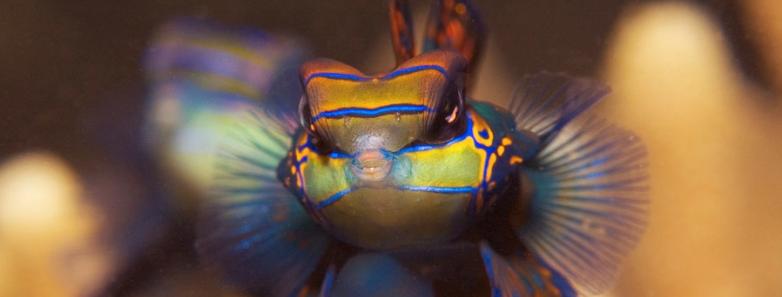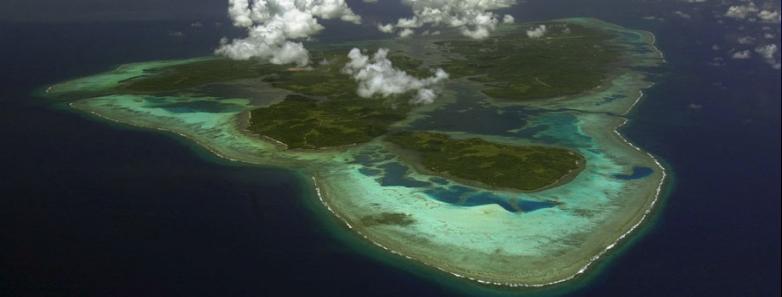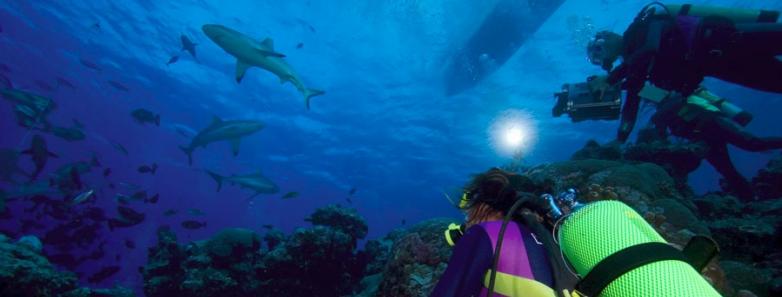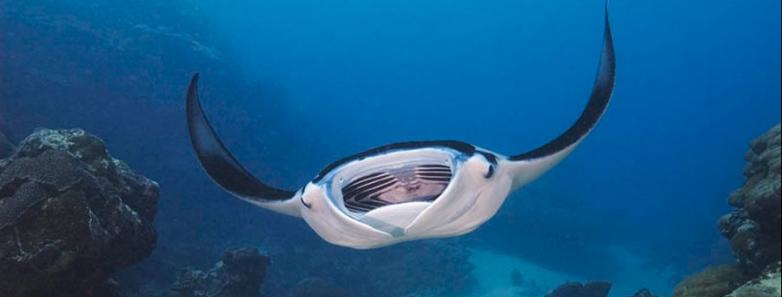Scuba diving in Yap, Micronesia
YAP DIVING HIGHLIGHTS
Scuba diving in Yap can be an eco-tourist’s dream come true, especially thanks to the recently designated protected area around Yap Island, where manta rays are able to swim freely and safely through the rich waters of the Pacific. This law, passed in 2008, protects the habitat of Yap's resident population of manta rays up to 12 miles offshore, an 8,243-square-mile area, comprising 16 main islands and atolls and 145 islets.
Manta rays favor Yap's marine ecosystem due to a biodiverse cluster of cleaning stations; there is a healthy density of planktonic organisms and a pollution-free environment. This haven means manta rays are yearlong residents around Yap Island, making it one of the last places in the world where sighting a manta ray is almost guaranteed at any time of the year. The sanctuary is also a haven for a huge marine life ecosystem and also serves as a protected home for sharks, turtles, reef fish, and eagle rays. This Micronesian paradise holds abundant macro life, beautiful hard coral gardens, and spectacular big animal encounters.
With calm conditions and new sites still being discovered, Yap has something for every level of diver, from beginners to the most advanced.
Jump to:
Marine Life & Environment - Dive Sites - Diving Conditions
Where is YAP?
Yap is part of the island group called Caroline islands located in the western Pacific Ocean. It is one of the most interesting islands among the group as the main island of Yap consists of four separate islands that all have relatively narrow water between them and all surrounded by a coral reef. Yap also has some outer islands that reach 500 mi (800km) to the east and south from the main islands.
View Location on Google Map
Diving Information
Yap Marine Life
Yap holds numerous animals that bring in divers worldwide. Whether its Mantas, the numerous sharks that patrol the walls, macro shots for the mating mandarin fish, or the beautiful swim-throughs at Yap caverns, there is something for everyone. Though most divers come to dive with manta rays, there is always plenty more to see.
List of some of the marine animals you are likely to see when scuba diving in Yap:
- Manta Rays
- Eagle Rays
- Mandarin Fish
- Dolphins
- Turtles
- Schooling Bumphead Parrotfish
- Black Trevally
- Blacktip Shark
- Whitetip Shark
- Grey Reef Shark
- Red Snapper
- Lionfish
- Barracuda
- Octopus
Diving Conditions
- Visibility: Changes drastically in the channels from 20 - over 100 ft ( 6- over 30 meters), while outer reefs hold a more consistent 100+ (30m+) vis.
- Water Temperatures: Stay in the 80s (27 C ) year-long.
- Depth Range: 5 - 40 m (16 - 131 ft)
- Weather: The tropical climate keeps the average temperature 80F (27 C).
Yap island is surrounded by beautiful dive sites. Some of them are better for manta ray sighting or for seeing sharks, while others offer beautiful reef and macro photography subjects. After diving in Yap, here are our top picks for the best dive sites around the main island.
Yap Caverns- The most southern part of the barrier reef is truly an entertaining paradise with multiple tunnels, chimneys, and chasms to swim through or explore. The caverns of beautiful canyons offer great shelter from strong currents which makes the dives easier. Great place to spot sharks!
Miil Channel- One of the best sites for spotting manta rays as they swim through the channel towards the cleaning stations as part of their daily routine. What is incredible, is that the mantas can swim by the divers very closely. Be aware that the currents can change from nonexistent to very strong.
Valley of the Rays- When the winds on the east coast become calm, many manta rays will migrate there and head to the cleaning stations. This happens during the summer season. Depending on the tidal conditions, the currents can become strong which gives a good drift diving opportunity.
Lionfish Wall- This wall of soft coral is home to anemones, invertebrates, tuna, barracudas, sharks and as the name says you can also spot lionfish hiding in the cracks of the wall. Also due to current, it is an exciting drift diving spot.
WWII LCM Shipwreck with torpedo- Not far from the famous wreck diving destination Truk Lagoon, Yap also has some wrecks to show. This World War II shipwrecks wheel has been covered with hard coral and nearby you can see an actual torpedo!
1:2 Macro Photography and Night Dives- Macro lovers won't be disappointed either when diving in Yap. This is the place to see the famous mandarin fish besides anemones, clownfish, and others. And because of being shallow with very little current it is also great for night dives.
Travel Information
How to Get There
Most visitors arrive at Yap International Airport via United Airlines, which flies from Palau or Guam. You can get a flight from any United airport hub in Denver, Los Angeles, New York, San Francisco or Washington DC. If you are coming from Europe, you most likely will have a stopover at Tokyo, Taipei or South Korea which then flies you through Guam and afterward arriving in Yap. Another option is flying direct from Palau to Yap with Pacific Missionary Aviation (PMA); read about travel advisor Laura's trip with PMA.
How to Dive Yap
There are professionally run dive shops and dive resorts ready to accommodate divers of all skill levels. As most dive sites are just about a 20-30 minute boat ride away, staying in a dive resort is the best way to explore the underwater world of Yap. There are also a few liveaboard options that include Yap as one of the destinations combined with Palau, Truk Lagoon or the Philippines.
Best Time to Dive
Diving is available year-round. The best way to decide when to visit is to decide what you would like to see. In the summer months, it is wetter, but the best times to see dolphins and pilot whales. In case you want to visit Yap to see the mostly manta rays, then between December to April is the best time to visit which is the manta ray mating season.
Topside & Non-Diving Activities
No visit would be complete without a sightseeing tour to learn of the Yap ancient culture. Seeing Yap's famous Rai stones, the human-sized stone money is a must. Meeting the local Yapese and seeing their traditional houses will give you a good glimpse of the local lifestyle and the Yap living history museum teaches you about their past.
Try out sailing on their traditional canoes, kayaking, deep-sea fishing, hiking/biking and a few of the other activities to keep you entertained during your visit. Plus, there are lots of options for snorkeling that also give the chance to see manta rays for your non-diving friends or family members. Of course, don't forget to relax on Yap's pristine beaches.
Other Useful Information
Practical Information
- Currency: US Dollar (USD)
- Language: The official languages of the island are Yapese, Ulithian, Woleaian, and Satawalese. English is used as a common language.
- Main Airport Code: YAP
- Time Zone: UTC+10
- Electricity: 120 V / 60 Hz
- Vaccines: Please check the CDC website for updated information on vaccines, health concerns, etc. It is recommended that you are up to date with Typhoid, Tetanus/Diphtheria, Hepatitis and Polio for any trip to the tropics.
- Visa: Not required for tourists staying 30 days or fewer.
GOT QUESTIONS? READY TO BOOK?
Call us today at 310-915-6677 or email us info@bluewaterdivetravel.com
And let us book your dream vacation!












